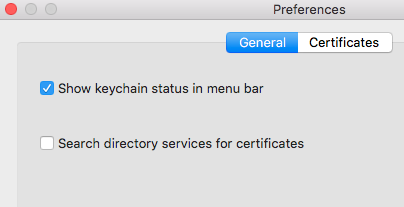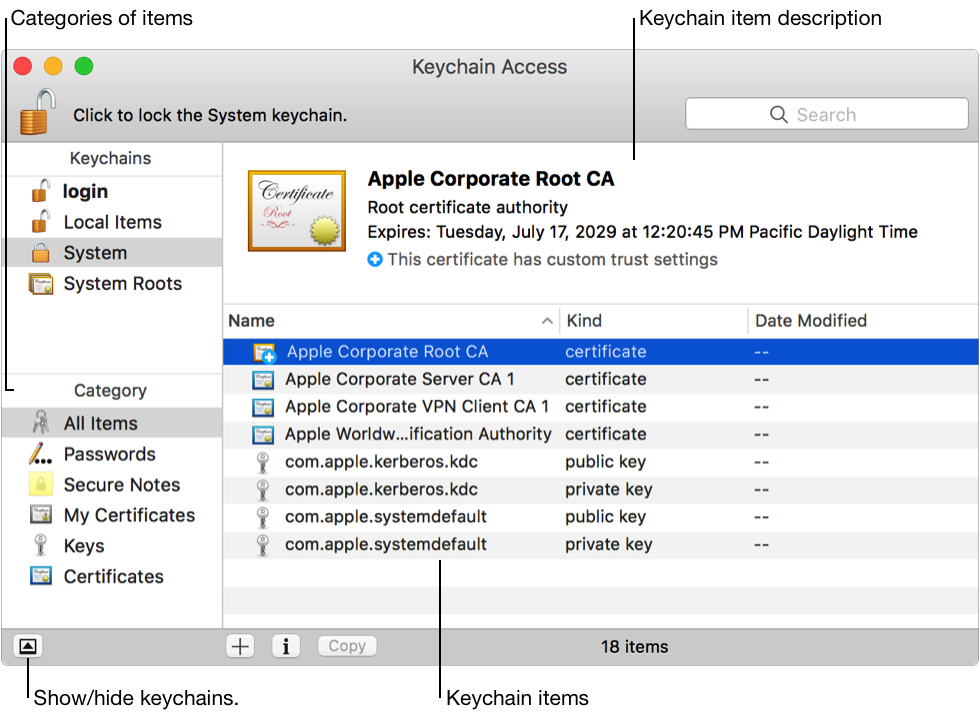

- #Firewall mac keychain access for mac
- #Firewall mac keychain access update
- #Firewall mac keychain access code
- #Firewall mac keychain access password

#Firewall mac keychain access update
I will not update Skype until a fix is released, and if that renders Skype unusable fortunately there are multiple great alternatives.
#Firewall mac keychain access for mac
Given that no other settings were changed other than update to 8.60 I am confident that this is a Microsoft bug, much like the recent one in the Office for Mac AutoUpdate that was generating nuisance dialogues until an update was quickly pushed out. Of course, now I am stuck with the Notification badge to update, since Skype does not have the option I have just restored to Skype 8.59.0.77 from a Time Machine backup and it works correctly and does not generate the dialogue prompts to access my Keychain. Keychain First Aid function was removed from MacOS several versions ago. The thread you linked dating from 2015 is outdated, for example the As I already stated, this did not correct the issue. I've already tried the link you provided, deleting the Skype Keychain entries and deleting all Skype prefs.

#Firewall mac keychain access password
However, there are some methods to make it a bit harder.Īpple could, for example, better obfuscate the keychain master password key in memory and make it harder for a tool like keychaindump to find it and extract it, Arnaud Abbati, a malware analyst at Intego, said Thursday.Īpple did not return a request for comment regarding its keychain design choices or the security implications of Salonen's tool.Thanks for the quick reply. There isn't much Apple can do to ultimately stop attackers with root access from stealing credentials stored in a user's keychain. "The main trick in that instance was that it would automatically validate the system dialog box that prompts the user to allow their keys to be exported." "One threat called DevilRobber discovered last year used a script to harvest passwords," Myers said. Mac malware authors have already shown an interest in keychain data. I just remember running a typical installer. I don't remember explicitly giving Twitter root access. Each of those installers had root access at some point. "Even non-critical stuff like IRC clients, video players, games, tiny helper apps, even the official Twitter client. "For example, I just browsed my /Applications folder, and noticed that a majority of my apps are owned by root," Salonen said. "Not because of vulnerabilities, but because you end up doing it all the time in day-to-day use." "I'm personally worried about how easy it is to gain root on a Mac," Salonen said. Social engineering in this context consists of the malware program masquerading as a legitimate program and asking the user to grant it administrative access. Social engineering being far and away the most common, as it's often fairly easy to trick someone." "The two most common ways to achieve root access is by way of exploits and social engineering.

Mac malware running as root is not an uncommon occurrence, Lysa Myers, virus hunter at Mac antivirus vendor Intego, said Thursday via email.
#Firewall mac keychain access code
However, the tool can just as well be incorporated in malware, since its source code is freely available online. Salonen hopes that the tool will be of use to authorized penetration testers who wish to quickly grab passwords in a post-system-compromise scenario. What sets keychaindump apart from other possible root-level password stealing methods is the speed and ease with which it can achieve its goal. "And, as most developers know, root can do *anything*." "What I described was not a security vulnerability in OS X, as it requires root access to begin with," Salonen said Thursday via email. "News flash, root can also format your hard drive, news at 11," renowned Apple hacker Charlie Miller said on Twitter when learning about Salonen's tool. After all, it's a well known fact that you can do pretty much anything on an operating system from the root (administrator) account. This is not necessarily a bad design decision and implementing the keychain access mechanism in a different manner - for example, by asking the user to input their keychain password every time when an application needs to access keychain data - wouldn't have ultimately impacted the ability of attackers with root access to steal keychain data.


 0 kommentar(er)
0 kommentar(er)
